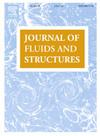Pore-scale numerical analysis of fluid flows in compressed polyurethane foams with a workflow of open-cell foams modeling
Abstract
eX-Poro-HydroDynamic (XPHD) lubrication presents a different scientific approach to dealing with tribological problems. It is an innovative inter- and multidisciplinary research topic which offers a promising sliding solution for various applications, such as thrust bearings, various guide components and in terms of load capacity and damping. XPHD lubrication is a lubrication mechanism of biomimetic inspiration which features an additional parameter to the system “the porous media”. It consists of self-sustained fluid films generated within compressible porous layers imbibed with liquids in replacement for using the fluid film only as in the classic lubrication system. Soft and porous structures imbibed with liquids generate a high load support under compression. The load support is generated through the resistance to flow inside the porous material. During compression, the resistance to flow and load support increases the greater the compression rate. The main objective of this work is then to understand the behavior of the fluid flow inside the porous structures when subjected to axial compression stress. In the scientific literature, the works studying the flow in compressible materials are essentially experimental because of their very complex geometrical shape, the CFD (Computational Fluid Dynamics) simulations offer an economical solution to study the performance of this new concept of lubrication. To create the geometry, the morphological structures of foam samples are reconstructed at different levels of compression rates from 3D (Three Dimensional) X-ray microtomography. This is achieved by using the commercial software Avizo that allows to process 3D images and create 3D meshes suitable for numerical simulations. The numerical simulations of flows will be performed with the solver IcoFoam of the toolbox OpenFOAM for incompressible laminar flows, making it possible to study the pressure drop in these porous structures. The performed simulations were made with a polyurethane foam of 96% porosity using five compression rates for creating the different structures. The analysis of the numerical simulations shows the impact of the polyurethane foam compression on different key parameters such as the decrease in the permeability as function of the compression rate, the anisotropy of the flow within the compressible structure and the actual increase in the tortuosity generated by the compression of the foam and the variation of the porosity.

 求助内容:
求助内容: 应助结果提醒方式:
应助结果提醒方式:


